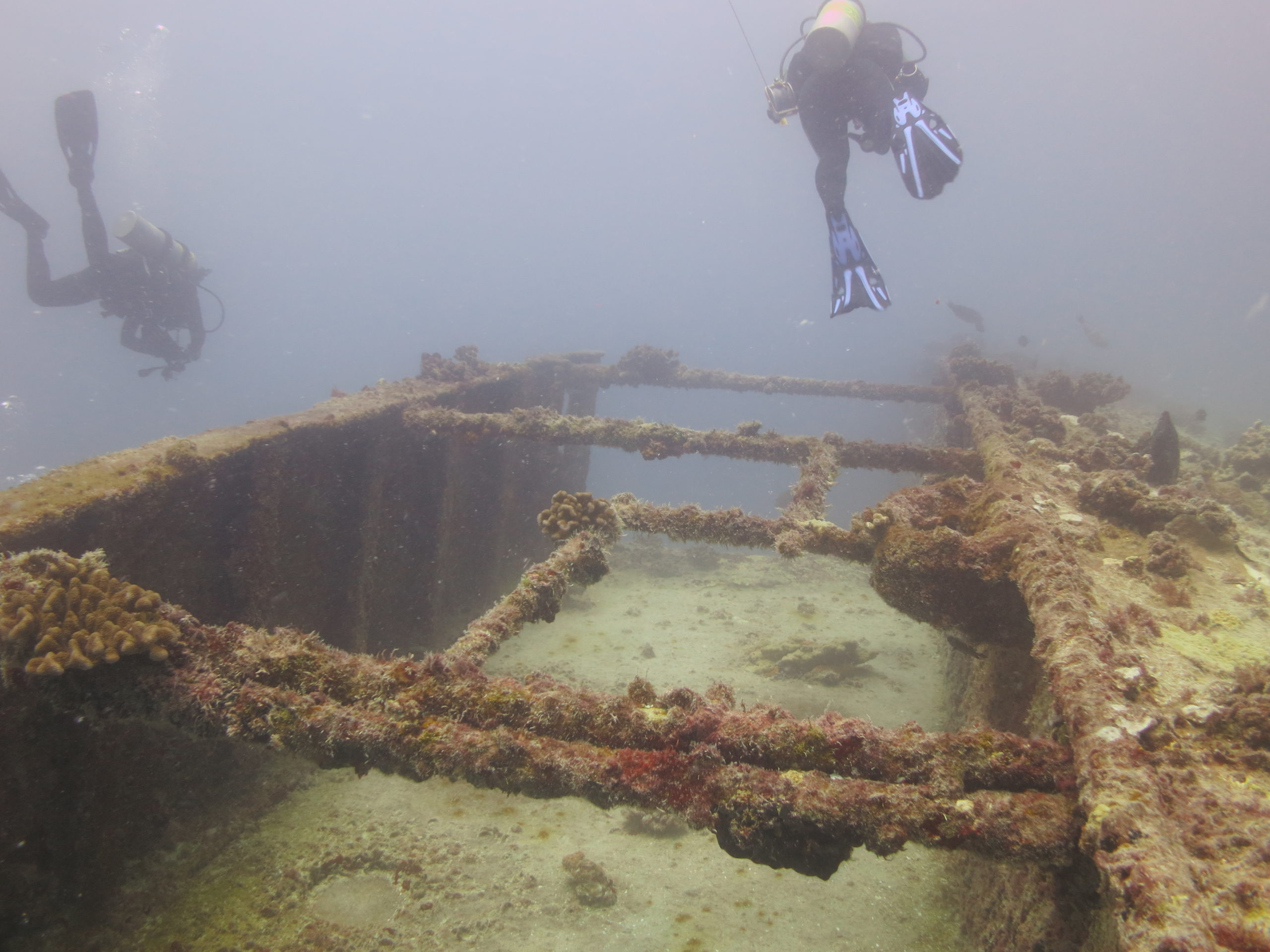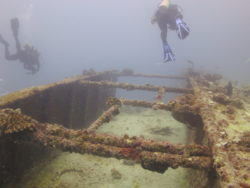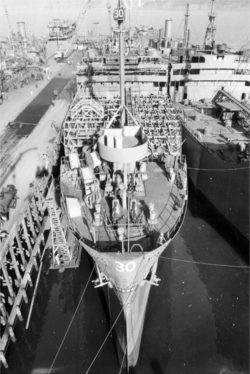
Mystery Solved: The Disappearance of USNS Mission San Miguel

Divers swim over the hull structure of USNS Mission San Miguel. Photo: Tate Wester/NOAA
Papahānaumokuākea Marine National Monument (PMNM) is known for its incredible biodiversity, iconic species, and beautiful coral reef habitats. You might not know that one of the world’s largest marine protected areas also protects some of America’s important historical resources. One of them is the USNS Mission San Miguel, a 523-foot World War II era tanker lost to the sea in 1957. Thanks to the work of NOAA maritime archaeologists, the wreck of the Mission San Miguel was discovered in 2015, 58 years after it disappeared. The USNS Mission San Miguel is the largest of the 60 known shipwrecks reported lost within the boundaries of PMNM and an important artifact of America’s efforts in World War II.
The USNS Mission San Miguel was built as part of the T2 SE-A2 Buenaventura class of tankers that the U.S. Navy used to deliver petroleum to U.S. forces overseas. Mission San Miguel represents the chaos associated with the War, including the fast-paced shipbuilding effort to meet warfare needs and the important role that petroleum played in global military efforts.
On November 4, 1947, the U.S. Navy acquired Mission San Miguel and used it as part of the Military Sea Transportation Service (MSTS) until 1950 when it was taken out of service. Once sidelined, the ship was part of the Navy’s Pacific Reserve fleet. It wasn’t long after that Mission San Miguel was called back into service; on July 24, 1950. This time, the ship supported U.S. troops stationed in Korea on and off for the better part of a decade.

SS Mission San Miguel fitting out, 26 November 1943, 27 days after launching. US Maritime Commission by Marinship photo courtesy Auke Visser’s Famous T – Tankers Pages.
USNS Mission San Miguel is a highly decorated ship, receiving commendations for its important military service over the years. Such awards include a National Defense Service Medal, a (retroactive) Korean Service Medal, a Republic of South Korea Service medal, and a United Nations Service Medal. However impressive her decade of service was, the ship met her fate in October of 1957.
While in service for the MSTS, Mission San Miguel departed Apra Harbor in Guam with her sights set for Seattle. With 42 crewmembers and passengers on board, the ship was set to pass through the Hawaiian Archipelago, about 23 nautical miles south of the Maro Reef. The ship’s long-range navigation (LORAN) system had poor reception, weakened by unfavorable weather conditions. As a result, the captain and chief mate miscalculated their coordinates, and the ship ran aground on Maro Reef around 8 pm on October 9, 1957. The reef pierced the ship’s hull and it took on water. The Air-Sea Rescue Center in Pearl Harbor, Hawaii was notified and issued orders for aircraft to locate the wreck and assess the site. The Captain ordered the ship to be abandoned and all hands survived. The Captain, Chief Mate, and Second Mate were charged with negligence for the incident. The wreck remained abandoned and undocumented until 2015 when a team of maritime archaeologists with NOAA’s Maritime Heritage team located and positively identified it.
On August 3, 2015, a team of archaeologists on the NOAA ship Hiʻialakai surveyed the site of the wreck as part of an annual expedition to PMNM. As part of the expedition plan, the team set out to find the elusive Mission San Miguel, using historic records and the ship’s navigational course during its final voyage. What makes the ship hard to find is the complex, maze-like nature of Maro Reef, and the murky waters that greatly reduce visibility. Using towboard and drift dive surveys in the area surrounding the last known area of the shipwreck, they were able to find and identify a large and mostly in-tact portion of the wreck before discovering other broken pieces of the ship scattered throughout the area.
We still have much to learn about what remains of the USNS Mission San Miguel but knowing where it lies and that it is fragmented is important information to have so researchers can visit and survey the site again in the future. The Mission San Miguel is one of the only glimpses we have into the T2 type tankers that were critical to our nation’s efforts in WWII. Protections offered by PMNM preserve these cultural and historic artifacts for our nation while investing in work done by NOAA teams and other agencies to survey, catalog, and protect these important sites.
